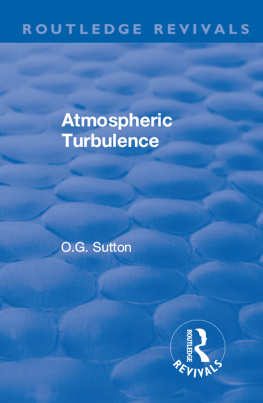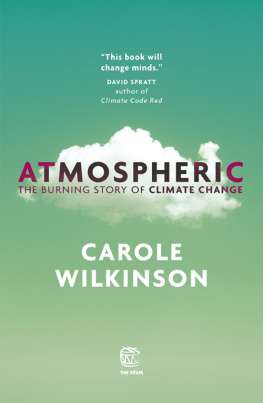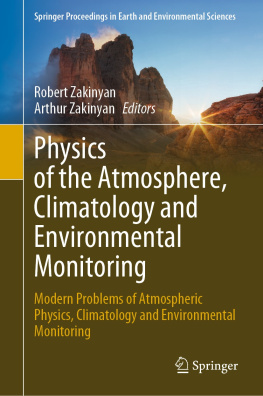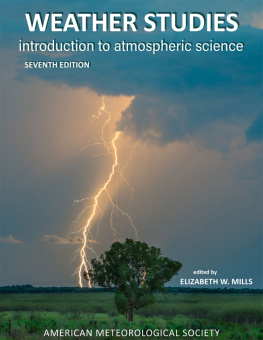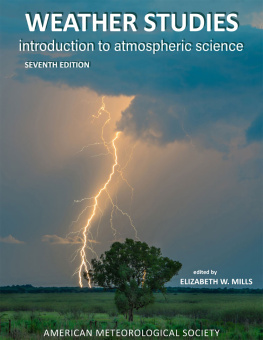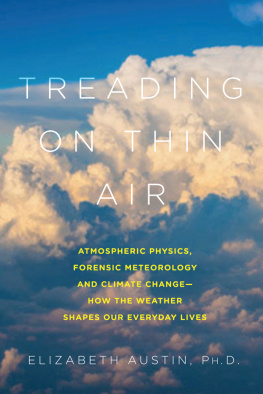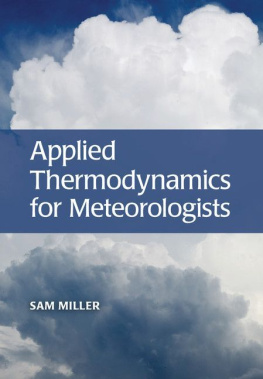Contents
Page List

Routledge Revivals
Atmospheric Turbulence
Originally published in 1955 Atmospheric Turbulence examines dynamic meteorology and the fundamental part it plays in the overall science of meteorology. The book examines the theory of atmospheric turbulence as a more mathematically developed area than largescale motions of the atmosphere and examines its significance in economic, military and industrial spheres. The book focuses on the effect and importance of atmospheric turbulence, not only to meteorologists, but the designers of large aircraft. The book addresses the effects of turbulence and the properties of the atmosphere that can be found closer to the ground. This book will be of interest to atmospheric physicists and meteorologists.
Atmospheric Turbulence
by O.G. Sutton

First published in 1955
by Methuen
This edition first published in 2019 by Routledge
2 Park Square, Milton Park, Abingdon, Oxon, OX14 4RN
and by Routledge
711 Third Avenue, New York, NY 10017
Routledge is an imprint of the Taylor & Francis Group, an informa business
1955 O.G. Sutton
All rights reserved. No part of this book may be reprinted or reproduced or utilised in any form or by any electronic, mechanical, or other means, now known or hereafter invented, including photocopying and recording, or in any information storage or retrieval system, without permission in writing from the publishers.
Publishers Note
The publisher has gone to great lengths to ensure the quality of this reprint but points out that some imperfections in the original copies may be apparent.
Disclaimer
The publisher has made every effort to trace copyright holders and welcomes correspondence from those they have been unable to contact.
A Library of Congress record exists under LCCN: 55003055
ISBN 13: 978-0-367-34017-9 (hbk)
ISBN 13: 978-0-429-32347-8 (ebk)
ISBN 13: 978-0-367-34018-6 (pbk)
METHUENS MONOGRAPHS ON PHYSICAL SUBJECTS
General Editor: B. L. WORSNOP, B.SC., PH.D.
ATMOSPHERIC TURBULENCE
ATMOSPHERIC TURBULENCE
by
O. G. SUTTON
C.B.E., D.Sc., F.R.S.
DIRECTOR OF THE METEOROLOGICAL
OFFICE
WITH 4 DIAGRAMS

First published September 15th 1949
Second Edition, 1955
2.1
CATALOGUE NO. 4044/U
PRINTED IN GREAT BRITAIN
PREFACE
IN this Monograph I have attempted an account of an aspect of dynamical meteorology which is now recognized as a study of major importance, not only because of its intrinsic interest and the fundamental part which it plays in the science of meteorology as a whole, but also because of its significance in economic, military and industrial spheres. The theory of atmospheric turbulence is more mathematically developed than those parts of dynamical meteorology which treat of large-scale motions of the atmosphere and I have considered the subject throughout as a branch of mathematical physics. This is a partial and perhaps a biased view of the subject, and it is with real regret that for reasons of space I have had to resist the temptation to include accounts of the special instruments which have been devised, with ingenuity and skill, for the highly accurate observations which the subject demands. I have also refrained from discussing turbulence in the upper air, but for quite another reason. This aspect of the subject is of the greatest importance both to meteorologists and to the designers of large aircraft, but the information available as yet is meagre and hardly in a state suitable for treatment in book form. The Monograph therefore deals exclusively with the properties of the atmosphere near the ground, undeniably the most important region for turbulence. It is obvious that a book of this size can make no claim to be exhaustive, and my aim through out has been to indicate to the reader those parts of the subject which seem to me to be significant for future development rather than to provide a long list of researches.
I am glad to acknowledge my indebtedness to Professor Brunts Physical and Dynamical Meteorology, a fact which will be obvious to the reader by the numerous references scattered throughout the book. I owe a special debt to Mr. K. L. Calder, Head of the Meteorology Section at the Chemical Defence Experimental Station, Porton, who has been kind enough to read the book in manuscript and whose suggestions I have almost invariably adopted. To my secretary, Mrs. F. D. Crockford, I owe my thanks for the care she has shown in the preparation of the typescript.
MILITARY COLLEGE OF SCIENCE
SHRIVENHAM, BERKS.
March, 1948
PREFACE TO THE SECOND EDITION
THE six years which have elapsed since this book was written have seen one major development, the introduction of the Kolmogoroff statistical theory. I have added a brief account of the fundamental ideas of this theory, and short additional paragraphs on natural convection and atmospheric pollution to bring the book up to date.
I have to thank correspondents for pointing out some misprints, all of which have been corrected in this edition.
O. G. S.
June, 1954.
CONTENTS
A SENSITIVE anemometer placed anywhere within a few hundred feet of the surface of the earth shows that the motion of the air consists for the most part of a succession of gusts and lulls accompanied by rapid and irregular alternations in direction. This feature, immediately obvious to anyone watching smoke from a chimney or ripples passing over a field of corn in summer, is more than a meteorological curiosity. The unsteadiness of the wind has much to do with the shape of life as we know it, for it is this property which largely controls such apparently dissimilar phenomena as the warming of the atmosphere near the surface of the earth, the evaporation of water from land and sea, the scattering of pollen and the lighter seeds and (most important in an industrial age) the removal of pollution from the air above great cities and crowded centres of industry.
The systematic study of atmospheric turbulence, i.e. of the eddying of the wind as a diffusing process, is of recent origin and all the major developments have occurred within the last thirty or forty years. To a large extent the subject has advanced with the study of aerodynamics and any systematic account must therefore start with a background of fluid motion theory.
All fluids, whether liquids or gases, exhibit some resistance to deformation, or viscosity. The analysis of viscosity may proceed in two ways: (a) by considering the mechanical properties of a fluid continuum without reference to its internal constitution, and (b) by ascribing a molecular structure to the fluid and making use of the statistical properties of an assembly of molecules. An examination of both approaches is essential as a preliminary to the study of the problem of turbulence.
Viscosity as a Bulk Property. Consider a fluid initially at rest between two parallel planes, one of which is set in motion relative to the other. The fluid adheres to both planes and a resistance is experienced as the motion of the plane spreads to the fluid itself. If

